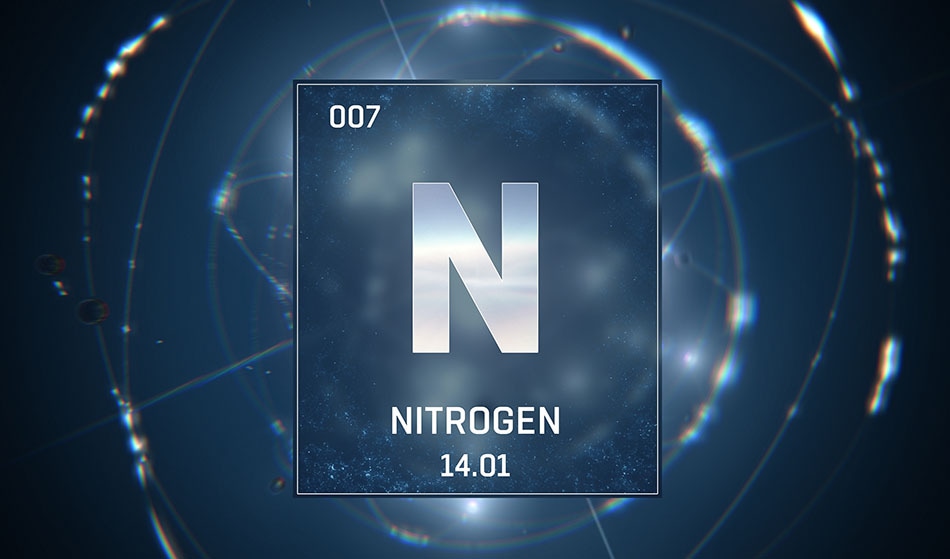
remotevfx.com / Shutterstock
A team of researchers has devised a new way to dissociate stable diatomic nitrogen molecules without the need for harsh conditions that current methods require. Using cyclic strain engineering, the scientists reduced the high pressures and temperatures conventionally needed for this process. To determine the nitrogen content, they used elemental analysis, as this is considered the most reliable method to do so. The new method that may prove useful in making inert organic forms of nitrogen widely available in place of its reactive form.
A new method of dissociating stable diatomic nitrogen molecules
Researchers in South Korea have established a new method for dissociating stable diatomic nitrogen molecules (N2). In a paper published this month in the journal Science Advances, the team, led by Gao-Feng Han of the Ulsan National Institute of Science and Technology (UNIST), demonstrated how they solved one of the most difficult challenges facing modern science.
The team of researchers created a method that overcomes the current issues surrounding the dissociation of N2. Up until now, this process had required harsh conditions to function, such as high pressure and incredibly high temperatures.
It was found that N2 can be dissociated under mild conditions with the use of cyclic strain engineering. The method the team created requires just 40°C of heat and less than 1 bar of pressure. Graphite was fundamental in allowing the technique to function, acting as a dissociated N* receptor. The cyclic loading and unloading mechanical strain induced alterations of the binding energy of N; encouraging the adsorption in the strain-free stage and facilitating desorption in the compressive strain stage, which resulted in efficient nitrogen dissociation.
The benefits of N2 dissociation
The reason the dissociation of stable diatomic nitrogen molecules is so important is that it allows reactive nitrogen compounds to be converted into relatively inert organic substances. If a convenient method of performing this dissociation were available, then these inert organic forms of nitrogen could be used to replace the reactive form, making it safer to transport and handle. It is known that the release of reactive hydrogen can disturb biogeochemical cycles, and therefore harm the balance required to maintain ecosystems.
Given that it is a heavily used element in the chemical industry relied on for the manufacture of fertilizers, nitric acid, nylon, dyes, and more, the inauguration of a simple method to convert N2 into its inert form could be widely beneficial. For this reason, the South Korea based team set about developing their new method.
How it works
The work of the team outlines that cyclic strain engineering can foster the easy dissociation of N2 under mild conditions. To do this, they first dissociatively absorbed N2 onto the surface of activated Fe balls, resulting in adsorbed nitrogen atoms (N*). Following this, N* was desorbed by compressive strain caused by drastic collisions by ball milling.
Finally, the dissociated N* is available to directly react with other active species, resulting in the formation of relatively inert organic substances, meaning that reactive nitrogen compounds are no longer required to provide a source of nitrogen. Graphite also played a key role in the process, being used as a receptor to accommodate the N* atoms.
The processes of nitrogenation, unzipping, and delamination of the graphite occur simultaneously, creating N-doped graphitic nanoplatelets (GNPs). The nitrogen content in the GNPs was determined using elemental analysis, as this was considered to be the most reliable method.
Future impact
The researchers were able to establish a method of accomplishing the dissociation of stable diatomic nitrogen molecules into inert organic substances without the use of harsh conditions required by previous methods. It is expected that this development will lead to opportunities for this process of direct synthesis of N-containing compounds from N2. What’s more, the method of using cyclic strain engineering is likely to be able to be extended for use in other reactions to overcome the need for harsh conditions.
Disclaimer: The views expressed here are those of the author expressed in their private capacity and do not necessarily represent the views of AZoM.com Limited T/A AZoNetwork the owner and operator of this website. This disclaimer forms part of the Terms and conditions of use of this website.